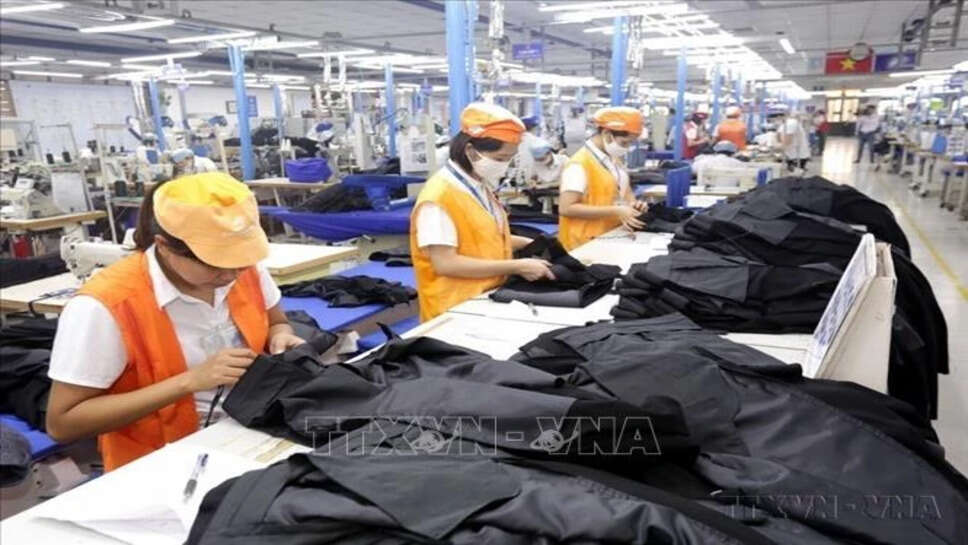Inter-Departmental Huddle on Textile Trade Amid EU & US FTA Talks

With international trade dynamics shifting rapidly, the Indian government has convened a critical inter-departmental meeting focused on the future of its textile sector. The urgency of the debate is driven by parallel Free Trade Agreement (FTA) negotiations with both the European Union and the United States. Textiles, India’s second-largest export commodity after petroleum, now stand at the crossroads—requiring careful balancing of global openness and domestic robustness. This article delves into the recent huddle, its agenda, stakeholders, and broader implications for India’s textile ambitions.
Why the Textile Sector is Crucial
India's textile and apparel industry supports over 4 crore (40 million) workers across spinning, weaving, garmenting, and handicrafts. It accounts for nearly 12% of the country’s total exports and contributes around 4% to its GDP. Globally, India ranks as the second-largest textile and apparel manufacturer. However, growing competition from Bangladesh, Vietnam, and notably China, challenges India’s position. The EU and US FTAs present both opportunities to expand market access and threats in terms of tariff concessions and domestic vulnerabilities.
Agenda of the Inter-Departmental Meeting
This specially constituted committee included representatives from the Commerce Ministry, Textiles Ministry, Finance Ministry, Customs, and key industry bodies. Their agenda spanned five critical areas:
-
Tariff Structures & Duties
Determining which import tariffs to reduce or eliminate and over what timeframe—crucial decisions as textile tariffs remain among the most sensitive in FTA negotiations. -
Rules of Origin (ROO)
Finalizing eligibility criteria for benefitting from FTA tariffs, especially given India's reliance on imported cotton and man-made fibers. Misaligned ROO can limit benefits to domestic producers. -
Non-Tariff Barriers & Standards
Ensuring that EU and US regulations—such as labor standards, environmental protocols, and traceability benchmarks—do not negate market access. -
Safeguard Measures & Escape Clauses
Negotiators want mechanisms to temporarily raise tariffs if imports surge suddenly, protecting local manufacturers. Designing these so they comply with trade norms is a balancing act. -
Export Incentive Continuity
Exploring how existing schemes like Remission of Duties, Merchandise Exports from India Scheme (MEIS), and RoSCTL will fare post-FTA, given WTO restrictions on export subsidies.
Key Departmental Positions
Commerce Ministry views FTAs as vital tools for expanding exports. Their data indicates that tariff elimination offers could add 10‑15% to India’s textile exports to the EU and US in five years—with gains potentially worth an additional $5‑7 billion annually. They argue that stronger market access will offset any short-term domestic threats.
Textiles Ministry prioritized job protection and sector sustainability. It highlighted the need for phased tariff reductions and strong safeguards to cushion clusters in Surat, Tirupur, and Ludhiana—regions that depend heavily on textiles.
Finance Ministry regarded the budgetary impacts: Export subsidy withdrawal could leave a ₹15,000‑20,000 crore hole in annual fiscal outlays. They recommended reorienting these benefits into productivity-linked performance incentives, conditional on investment and compliance.
Customs & Compliance teams emphasized the enforcement of ROO and regulatory standards. They suggested a digital traceability mechanism, interoperable with EU and US systems, to reduce fraudulent claims and ensure seamless exports.
Industry Voices at the Table
Prominent industry bodies such as the Confederation of Indian Textile Industry (CITI), Apparel Export Promotion Council (AEPC), and the Federation of Indian Export Organizations (FIEO) presented data and policy inputs during the meeting.
-
CITI urged retention of tariff lines at 10–15% for man-made textiles for up to seven years and recommended a 60–70% value addition norm for ROO to incentivize local production.
-
AEPC claimed that under current protocols, only 40% of Indian apparel would qualify for FTA benefits. They pushed for broader value‑chain inclusion and shared supply‑side responsibilities.
-
FIEO reiterated the urgency of defining environmental compliance—such as dye chemicals and wastewater treatment—on a priority basis to prevent sudden trade disruptions.
Tough Negotiation Flashpoints
Tariff Phase-down Periods:
The US and EU have proposed rapid phase-downs—gradual elimination over three years. India wants ten years for sensitive items such as cotton yarn and specialized fabrics, to smooth structural adjustments.
Rules of Origin Complexity:
The proposed ROO for cotton shirts demands 55–60% Indian value addition. The concern is that imported fabrics might swell costs. Industry proposes blending Indian yarns with duty-differentiated fibers to balance competitiveness.
Environmental Clauses:
The EU insists on compliance with its Textile Waste and Control (TWC) regulations—forcing wastewater treatment and restricted chemical usage. India insists on capacity-building programs for compliance infrastructure before enforcement begins.
Export Incentives:
With WTO constraints looming, India plans to consolidate existing schemes into a Technology Upgradation Fund Scheme (TUFS)-like structure. However, FTA partners view this as bordering on banned subsidies. Negotiators must calibrate around WTO thresholds.
Safeguard and Sunset Claws
India demands automatic safeguard mechanisms allowing emergency tariff restoration for up to three years if imports rise beyond agreed thresholds. The EU and US are wary, preferring case-by-case review but have signaled openness toward flexible arrangements as part of the deal.
Timeline, Task Forces, and Next Steps
-
Phase I involved internal consensus-building and technical clarifications—now complete.
-
Phase II (Ongoing): Preparing negotiation briefs and alignment with sectoral roadmaps.
-
Phase III is slated for the formal FTA negotiation rounds—projected to begin later this year.
In parallel, a task force will craft proposals for competitor benchmarks (like ASEAN‑EU FTAs) and design pilot digital traceability systems for apparel exports.
Prospects and Pitfalls
Opportunity Zones
-
Access to the EU’s GSP range and US entry to large retail markets.
-
Stimulus for domestic units to upgrade to global standards.
-
Greater foreign direct investment—firms may set up manufacturing to meet ROO conditions.
Risks
-
Exposure to import surges in domestic markets.
-
Fiscal distress due to withdrawal of subsidies.
-
Regional clusters vulnerable to dislocation if standards are not met in time.
Economic Outlook & Ripple Effects
Well-structured FTAs can transform the textile sector:
-
Spinning mills may expand amid increased global demand.
-
Small garment units will need modernization—shifting from low-margin basic stitching to higher-value design-led products.
-
Handloom artisans may find new niche exports, especially under geographical indication (GI) schemes, if linked with EU’s GI network.
However, these shifts require parallel investments—upskilling labor, energy-efficient dye-houses, and compliance labs. Without coordinated action, cluster zones could see job losses.
Comparisons with Global FTAs
India can leverage lessons from other economies:
-
Vietnam-EU and Vietnam-US deals show that phased market access and strong investment in quality infrastructure propelled growth.
-
Bangladesh’s GSP removal fears post-LDC graduation illustrate how fragile gains can be lost without diversified market strategy.
Strategic Recommendations from the Meeting
To ensure a win-win FTA, the inter-departmental team proposed:
-
Phased Tariff Rollbacks: Longer timelines for sensitive segments and conditional acceleration for others.
-
Dynamic ROO: Graduated Indian value-add norms with easier thresholds in early years.
-
Balanced Safeguards: Pre-agreed annual quotas and escalation clauses for rapid remedy.
-
Hybrid Export Incentives: Direct production-linked support for modernization, not just market promotion.
-
Compliance Catalyst Programs: Government grants, green labs, and training partnerships focusing on sustainability and safety.
-
Digital Tracking System: Pilots with RFID or blockchain to certify origin and prevent abuse.
The inter-departmental meeting is the first step in charting a comprehensive roadmap for India's textile diplomacy. With delicate balancing between global competitiveness and domestic stability, the upcoming FTA negotiations with the EU and US offer both risk and opportunity. If India crafts thoughtful concessions and leverages transition support—backed by investment in skilling and infrastructure—it can elevate its textile industry into a globally integrated powerhouse. However, missteps could lead to job losses, revenue dips, and domestic discontent.
As India strives to accelerate manufacturing and export-led economic growth, how it navigates these textile trade huddles may well define the next decade of industrial success.
